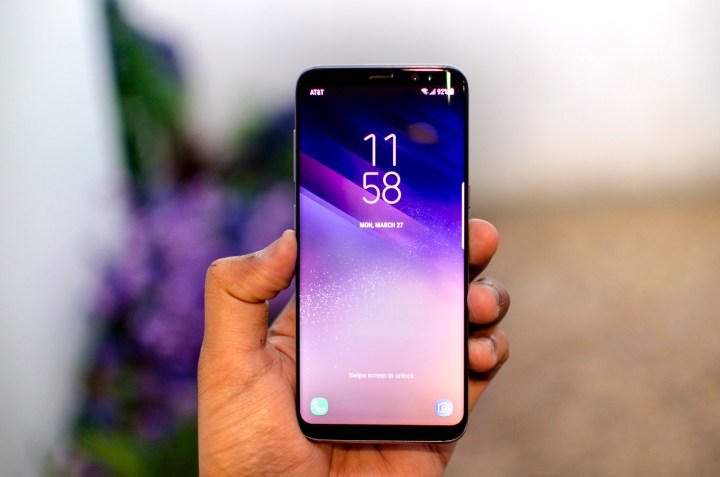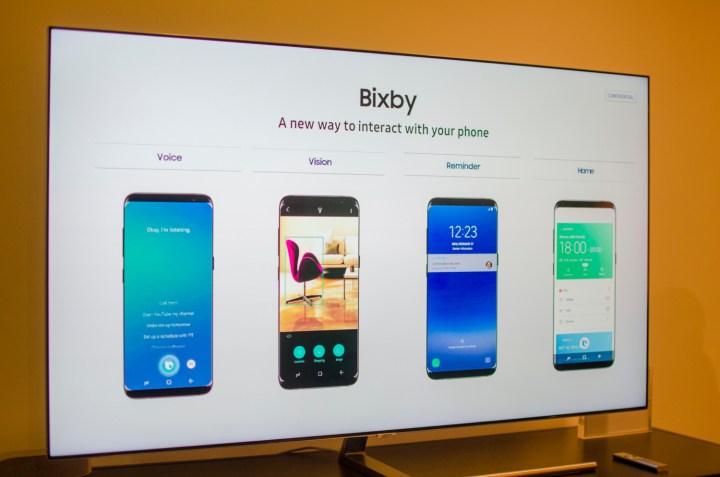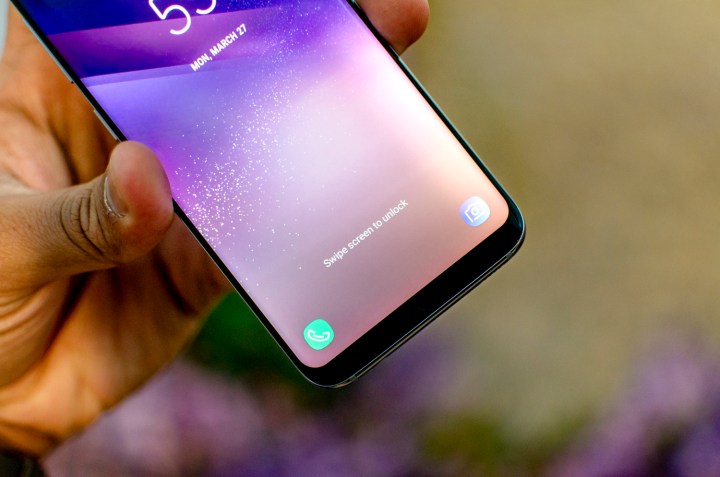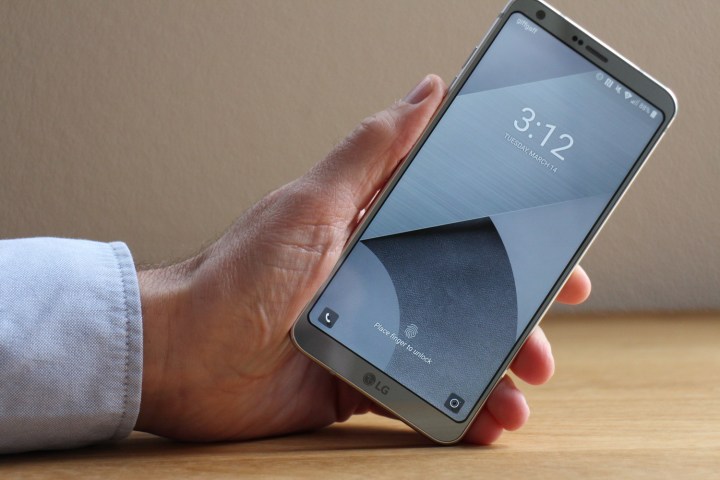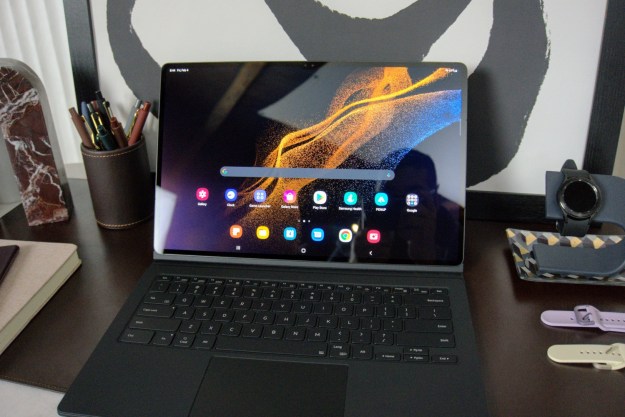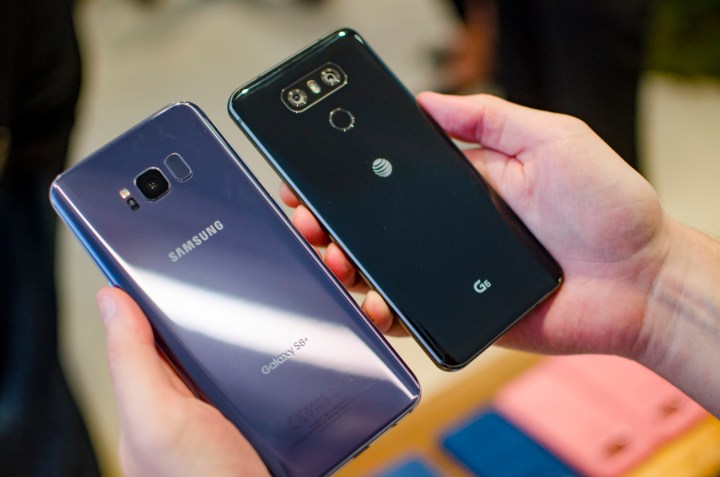
But the
Specs
|
Samsung  |
LG G6  |
|
| Size | 148.9 × 68.1 × 8.0 millimeters (5.86 × 2.71 × 0.31 inches) | 148.9 × 71.9 × 7.9 millimeters (5.86 × 2.83 × 0.31 inches) |
| Weight | 5.47 ounces (155 grams) | 5.75 ounces (163 grams) |
| Screen | 5.8-inch Quad HD+ Super AMOLED | 5.7-inch IPS LCD touchscreen |
| Resolution | 2,960 × 1,440 | 2,880 × 1,440 pixels |
| OS | Android 7.0 Nougat | Android 7.0 Nougat |
| Storage | 64GB | 32 (64GB in select markets) |
| MicroSD Card Slot | Yes | Yes |
| NFC support | Yes | Yes |
| Processor | Qualcomm Snapdragon 835 Samsung Exynos 9 Series 8895 (International) |
Qualcomm Snapdragon 821 |
| RAM | 4GB | 4GB |
| Connectivity | 4G LTE, GSM, CDMA, HSPA+, 802.11a/b/g/n/ac Wi-Fi | 4G LTE, HSPA+, 802.11ac/b/g/n/ac Wi-Fi |
| Camera | 12MP rear with OIS, 8MP front | 13MP rear dual with OIS and wide-angle lens, 5MP front |
| Video | 4K | 4K |
| Bluetooth | Yes, version 5 | Yes, version 4.2 |
| Fingerprint sensor | Yes | Yes |
| Other sensors | Barometer, gyroscope, accelerometer, proximity sensor | Barometer, gyroscope, accelerometer, proximity sensor |
| Water Resistant | Yes, IP68 | Yes, IP68 |
| Battery | 3,000mAh | 3,300mAh |
| Charger | USB Type-C | USB Type-C |
| Quick Charging | Yes | Yes |
| Wireless Charging | Yes, Qi and PMA | Yes, Qi and PMA (U.S. only) |
| Marketplace | Google Play Store | Google Play Store |
| Color offerings | Black, silver, orchid gray, coral blue (international) gold (international) | White, black, platinum |
| Availability | AT&T, Verizon, Sprint, T-Mobile | AT&T, Verizon, Sprint, T-Mobile |
| Price | Starting at $720 | Starting at $650 |
| DT Review | First Take | 4.5 out of 5 stars |
On the inside, the LG G6 isn’t all that different from the
The
LG’s G6, on the other hand, boasts the slightly older Snapdragon 821 processor — the same powering the OnePlus 3T and Google Pixel.
In most apps, benchmarks, and real-world situations, the Snapdragon 835 appears to beat the Snapdragon 821 handily. Anandtech’s testing shows it achieving a score of 3,844 in 3D Mark’s Slingshot Extreme test compared to the Snapdragon 821’s 2,106.
There’s no question when it comes to processing power: The
Winner: Samsung
Design
The
The back is a little busier than prior devices like the Galaxy S7, due to the placement of the fingerprint sensor near the rear camera, but that doesn’t mean it’s any less sleek. The
The LG G6 is exactly the same — it’s wrapped with glass on both sides, allowing it to easily pick up fingerprints. You would think the G6 is more compact than the S8, with its 5.7-inch screen, but that’s not really the case. The G6 is slightly thinner and wider, but it shares equal length with the S8 even though the S8 has a 0.1-inch larger screen.
On the back of the G6, a fingerprint sensor doubles as a power button below a dual-lens camera and flash unit.
It’s a close call between the
Winner: Samsung
Display
The
The G6 shares a similar 2,880 × 1,440 pixel resolution, and both phones also have a similar 18:9 aspect ratio (the S8 has an 18.5:9 aspect ratio). The 5.7-inch LCD display panel on the G6 is great, and it even supports Dolby Vision HDR. Samsung’s is no slouch either, since the company worked with the Ultra HD Alliance to make sure the S8’s screen is premium
LG has optimized several of its apps to make use of the 18:9 aspect ratio, so you can see more information. It’s unclear if Samsung has enabled such optimizations, so we’ll have to wait and see.
The LG G6’s screen is otherwise bright, beautiful, and colorful, but it can’t measure up to the
There’s no denying that both smartphones offer a superior display than most of the competition. Still, we think the superior contrast and deep blacks offered by AMOLED panels are more beneficiary than optimized apps for the 18:9 ratio on the G6 — especially when apps need to add support.
Winner: Samsung
Battery life, camera, and software
Battery life and charging
The
The LG G6 has a slightly larger 3,200mAh battery that, like the
The jury’s out on which phone lasts longer. While we want to say the G6 will come out ahead due to its capacity advantage, we don’t know what to expect with the Snapdragon 835. This one’s a tie.
Winner: Draw
Camera
The
The G6 packs two 13-megapixel cameras in one. The first boasts a f/2.4 aperture and a 125-degree wide-angle lens, and the second has a 71-degree lens with optical image stabilization and a f/1.8 aperture.
We were impressed with the G6’s camera. It performed favorably against the Google Pixel in our testing, but sometimes struggled to manage contrast and resolve details in low light.
The wider-angle lens is the true standout. Used creatively, and with the right lighting, it lent fantastic perspective that competition like the S8 can’t match.
Choosing between the G6 and the
Winner: LG G6
Software
Both the
Comparing LG’s take to Samsung’s TouchWiz is effectively like comparing granny smith apples to golden delicious: They’re both apples, but remarkably different in terms of texture and taste. They do share many of the same settings options, and the same Google Play app store.
The
The Galaxy S8 also has DeX, a docking station that transforms the
Apart from LG’s apps and multitasking mode making use of the 18:9 aspect ratio to show more information, the G6’s software is comparatively bare bones. That’s not a bad thing — LG’s skin is slick, smooth, and aesthetically-pleasing.
But Samsung’s ambition is enough to nab the win. We’ll have to see how
Winner: Samsung
Durability and pricing
Durability
Given the
The
Both smartphones are IP68 dust- and water-resistant, meaning you can dip them underwater up to 1.5 meters for about 30 minutes.
Winner: Tie
Price and availability
The
| Samsung Galaxy S8 | LG G6 | |
| AT&T | $750 or $25 per month for 30 months | $720 or $24 per month for 30 months |
| Sprint | $750 or $31.25 per month for 24 months | $708 or $29.50 per month for 24 months |
| T-Mobile | $750 or $30 per month for 24 months with a $30 down payment | $650 or $26 per month for 24 months |
| Verizon | $720 or $30 per month for 24 months | $672 or $28 per month for 24 months |
The G6 is available for quite a bit less on the same networks, although that does depend on your network.
There’s no point beating around the bush: The
Winner: LG G6
Overall winner: Samsung Galaxy S8
It’s close fight between the G6 and
The
It does all this will offering a 5.8-inch screen that’s nearly as compact as the 5.7-inch screen on the G6.
Editors' Recommendations
- The best Samsung Galaxy Tab S8 Plus cases and covers
- The best Samsung Galaxy Tab S8 Plus keyboard cases
- Samsung Galaxy Tab S8 vs. Samsung Galaxy Tab S7
- Samsung Galaxy S22 vs iPhone 13: Which should you buy?
- Samsung Galaxy Tab S8 Plus vs. iPad Air 4
